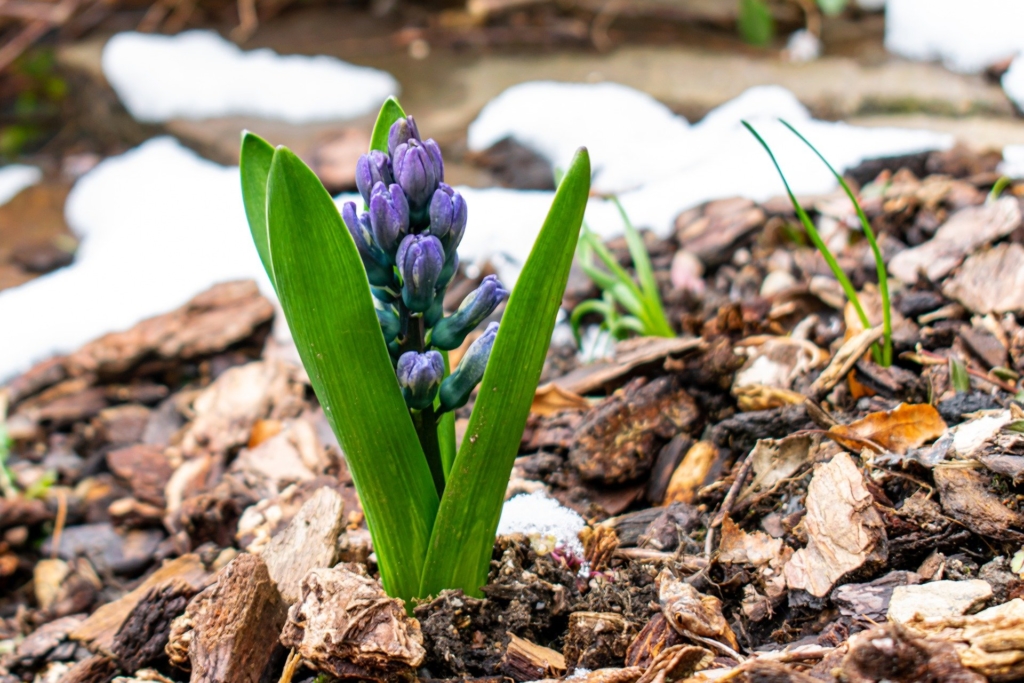Gardening season is in full effect, and if you are someone who gardens, you are constantly looking for techniques for improving your garden. Mulching is one of the simplest and most traditional ways to do this. In fact, mulching is exceedingly beneficial for your garden.
What Exactly is Mulching?
Mulch is essentially any material that is laid over the surface of soil as a covering (or protective shield if you will). It is usually, but not exclusively, derived from organic material. Examples of organic mulch include shredded bark, grass clippings, pine needles, straw, newspapers made with vegetable-based inks, shredded leaves, composted household materials, and wood chips. Mulches that are inorganic include lava rock, different types of stone, rubber, roll plastic, and fabrics.
Both organic and inorganic mulch offer different benefits. While organic mulch decomposes quickly and frequently needs replenishment, the decomposition process itself improves the health and quality of the soil. Perhaps the greatest benefit of inorganic mulch is that it doesn’t decompose so you never need to replenish it – it achieves the goal of protecting the soil, but not necessarily improving it. As a result, organic mulches are widely known for being better mulch.
What is the Purpose of Mulching and What Benefits Does it Provide My Garden?
Mulch is used for many reasons, including:
- To retain moisture in the soil
- To prevent weeds from growing
- To maintain the soil at a cooler temperature
- Prevent plants and lawn covering from frost damage in winter
Additional benefits mulching offers are:
- Making your garden bed look more attractive overall
- As you just learned, organic mulches decompose. The decomposition helps boost the soil’s structure, drainage, and nutrient-holding capacity
If you’re trying to create a more sustainable lifestyle, growing your own fruits and vegetables in a garden is a great way to do just that. There are many different benefits to having your own garden, including saving money on produce, establishing a healthier diet, and contributing less to agriculture-related emissions and waste.
While gardening overall is indeed a wonderful hobby that offers many benefits to both the environment as well as your mental/physical well-being, it can get pretty pricey. So, it’s important to look for inexpensive supply alternatives. Mulching is definitely one of these supplies. In fact, you can easily create your own mulch at home at little to no cost!
How to Make Your Own Mulch
Check out below how you can easily make your own mulch at home.
- Choose the type of mulch you want to make – As you’ve just learned, there are plenty of options to choose from. We like using bark, compost, pine needles, and other organic materials
- Collect your mulch pile – If you’re going to use yard waste, create a pile for leaves, lawn clippings, and so on. If you’re planning on using composted food scraps, simply store them in a compost bin (there are different sizes available for purchase depending on whether you will be storing your food scraps in your kitchen or in your yard). Just about any non-meat food item can be composted – from potato peels and citrus rinds to coffee and bread. (You can refer to the EPA guide for composting at home if you have any questions)
- Keep your compost pile moist – This can be achieved by just easily stirring/mixing your materials as they decompose
- Convert the materials you’ve gathered into mulch – This is done by breaking it down in size. In the case of leaves and other yard waste, you can use a lawnmower. Be sure to practice safety while using a lawnmower.
- Prepare the soil for mulching – Remove any old or unused mulch and make sure the area you are mulching is completely weeded.
- Spread the mulch evenly – It’s important not to over mulch or to pile mulch near plants as these actions can harm the plant. Instead, spread mulch evenly throughout the area. Generally, the mulch should be approximately 2 inches high.
There are many things you can do to help inexpensively and sustainably improve the health and appearance of your yard/garden, and mulching is just one of them! We hope the above was helpful to get you started on making your own mulch at home.
If you’re looking for other sustainability ideas, energy efficiency tips, and energy industry topics, then be sure to stay tuned on the Spring Power & Gas blog.


